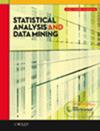考克斯模型下的转移学习与区间删失数据
IF 2.1
4区 数学
Q3 COMPUTER SCIENCE, ARTIFICIAL INTELLIGENCE
引用次数: 0
摘要
转移学习侧重于借用信息来解决样本量有限的问题,近年来越来越受到关注。我们的方法旨在利用其他人群的数据作为补充,以提高对风险因素的识别能力,并对代表性不足的亚群进行失败时间预测。然而,在利用区间删失数据进行风险评估时,如何将知识有效地从源头转移到目标,同时又能兼顾人群的不可比性和隐私限制,这在文献中还存在空白。我们的目标是通过开发 Cox 比例危险模型下的转移学习方法来弥补这一空白。我们引入了免调整的 Trans-Cox-MIC 算法,在确保计算效率的同时,实现了回归系数和基线危险度的自适应信息共享。我们的方法能适应协变量分布变化、系数变化和基线危险差异。大量的模拟展示了该方法的准确性、稳健性和高效性。在前列腺癌筛查数据中的应用表明,非裔美国人的风险估计精度和预测性能都得到了提高。本文章由计算机程序翻译,如有差异,请以英文原文为准。
Transfer learning under the Cox model with interval‐censored data
Transfer learning, focusing on information borrowing to address limited sample size issues, has gained increasing attention in recent years. Our method aims to utilize data from other population groups as a complement to enhance risk factor discernment and failure time prediction among underrepresented subgroups. However, a literature gap exists in effective knowledge transfer from the source to the target for risk assessment with interval‐censored data while accommodating population incomparability and privacy constraints. Our objective is to bridge this gap by developing a transfer learning approach under the Cox proportional hazards model. We introduce the tuning‐free Trans‐Cox‐MIC algorithm, enabling adaptable information sharing in regression coefficients and baseline hazards, while ensuring computational efficiency. Our approach accommodates covariate distribution shifts, coefficient variations, and baseline hazard discrepancies. Extensive simulations showcase the method's accuracy, robustness, and efficiency. Application to the prostate cancer screening data demonstrates enhanced risk estimation precision and predictive performance in the African American population.
求助全文
通过发布文献求助,成功后即可免费获取论文全文。
去求助
来源期刊

Statistical Analysis and Data Mining
COMPUTER SCIENCE, ARTIFICIAL INTELLIGENCEC-COMPUTER SCIENCE, INTERDISCIPLINARY APPLICATIONS
CiteScore
3.20
自引率
7.70%
发文量
43
期刊介绍:
Statistical Analysis and Data Mining addresses the broad area of data analysis, including statistical approaches, machine learning, data mining, and applications. Topics include statistical and computational approaches for analyzing massive and complex datasets, novel statistical and/or machine learning methods and theory, and state-of-the-art applications with high impact. Of special interest are articles that describe innovative analytical techniques, and discuss their application to real problems, in such a way that they are accessible and beneficial to domain experts across science, engineering, and commerce.
The focus of the journal is on papers which satisfy one or more of the following criteria:
Solve data analysis problems associated with massive, complex datasets
Develop innovative statistical approaches, machine learning algorithms, or methods integrating ideas across disciplines, e.g., statistics, computer science, electrical engineering, operation research.
Formulate and solve high-impact real-world problems which challenge existing paradigms via new statistical and/or computational models
Provide survey to prominent research topics.
 求助内容:
求助内容: 应助结果提醒方式:
应助结果提醒方式:


